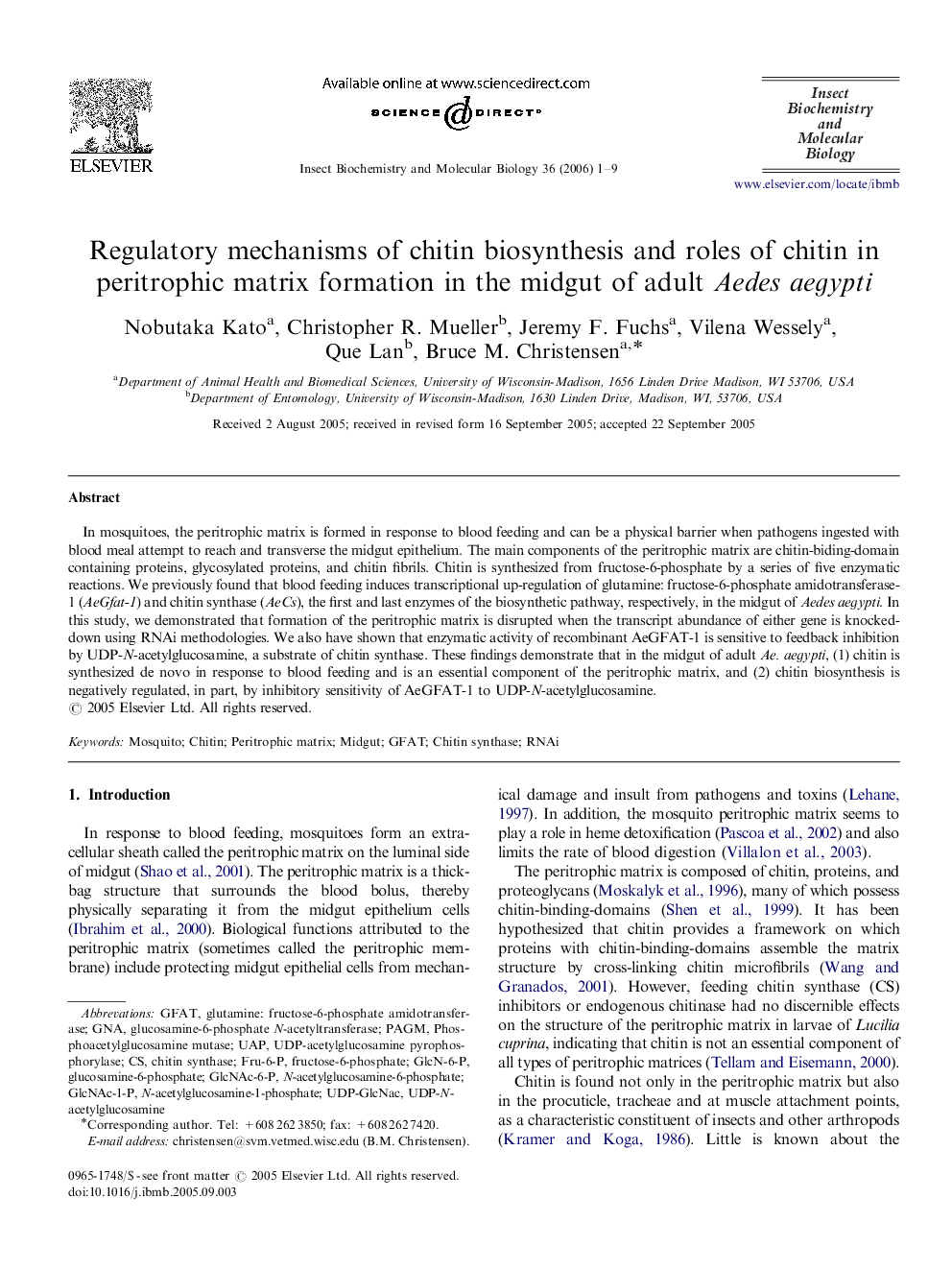| Article ID | Journal | Published Year | Pages | File Type |
|---|---|---|---|---|
| 1983147 | Insect Biochemistry and Molecular Biology | 2006 | 9 Pages |
In mosquitoes, the peritrophic matrix is formed in response to blood feeding and can be a physical barrier when pathogens ingested with blood meal attempt to reach and transverse the midgut epithelium. The main components of the peritrophic matrix are chitin-biding-domain containing proteins, glycosylated proteins, and chitin fibrils. Chitin is synthesized from fructose-6-phosphate by a series of five enzymatic reactions. We previously found that blood feeding induces transcriptional up-regulation of glutamine: fructose-6-phosphate amidotransferase-1 (AeGfat-1) and chitin synthase (AeCs), the first and last enzymes of the biosynthetic pathway, respectively, in the midgut of Aedes aegypti. In this study, we demonstrated that formation of the peritrophic matrix is disrupted when the transcript abundance of either gene is knocked-down using RNAi methodologies. We also have shown that enzymatic activity of recombinant AeGFAT-1 is sensitive to feedback inhibition by UDP-N-acetylglucosamine, a substrate of chitin synthase. These findings demonstrate that in the midgut of adult Ae. aegypti, (1) chitin is synthesized de novo in response to blood feeding and is an essential component of the peritrophic matrix, and (2) chitin biosynthesis is negatively regulated, in part, by inhibitory sensitivity of AeGFAT-1 to UDP-N-acetylglucosamine.
